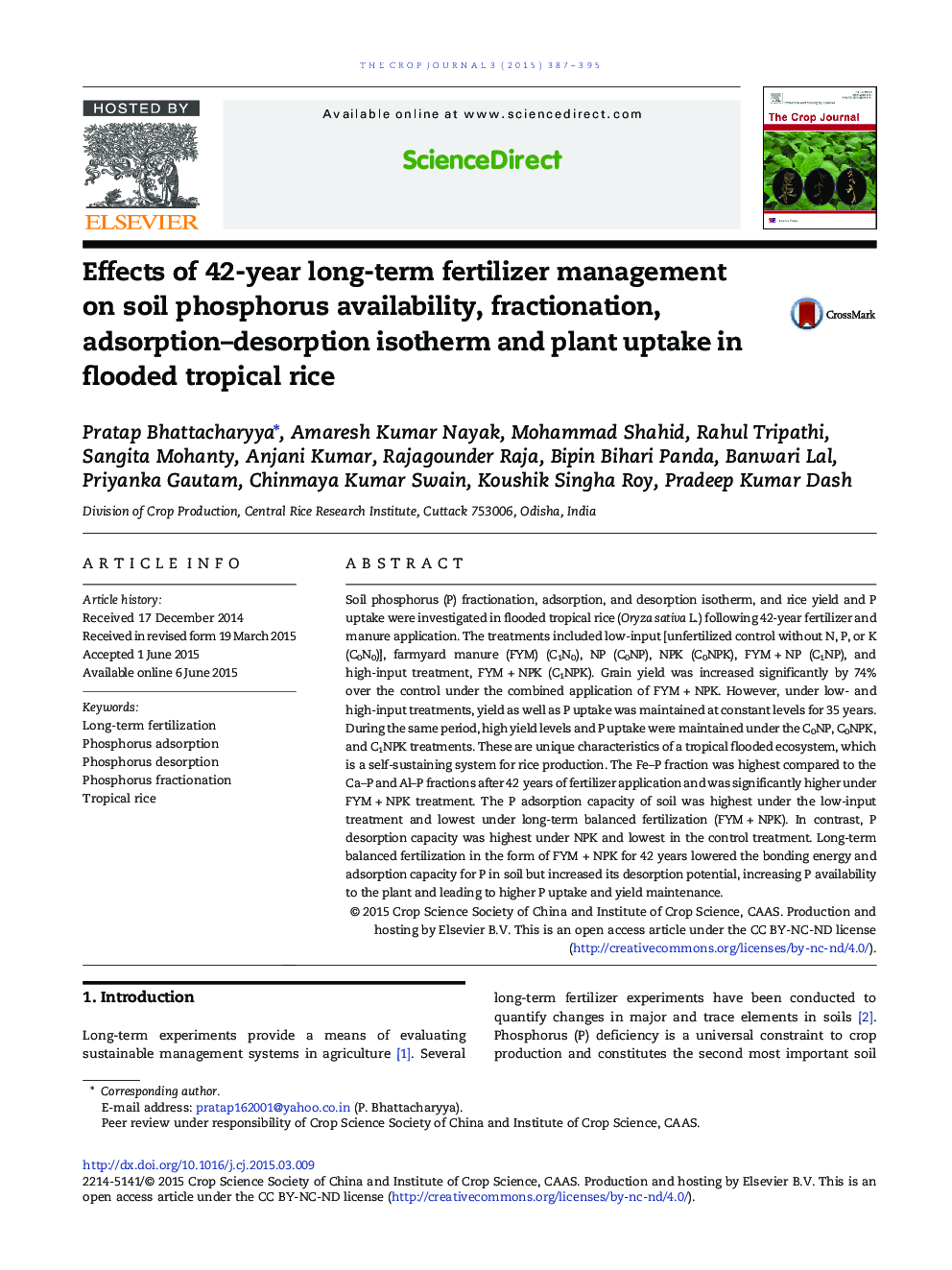| Article ID | Journal | Published Year | Pages | File Type |
|---|---|---|---|---|
| 2079442 | The Crop Journal | 2015 | 9 Pages |
Soil phosphorus (P) fractionation, adsorption, and desorption isotherm, and rice yield and P uptake were investigated in flooded tropical rice (Oryza sativa L.) following 42-year fertilizer and manure application. The treatments included low-input [unfertilized control without N, P, or K (C0N0)], farmyard manure (FYM) (C1N0), NP (C0NP), NPK (C0NPK), FYM + NP (C1NP), and high-input treatment, FYM + NPK (C1NPK). Grain yield was increased significantly by 74% over the control under the combined application of FYM + NPK. However, under low- and high-input treatments, yield as well as P uptake was maintained at constant levels for 35 years. During the same period, high yield levels and P uptake were maintained under the C0NP, C0NPK, and C1NPK treatments. These are unique characteristics of a tropical flooded ecosystem, which is a self-sustaining system for rice production. The Fe–P fraction was highest compared to the Ca–P and Al–P fractions after 42 years of fertilizer application and was significantly higher under FYM + NPK treatment. The P adsorption capacity of soil was highest under the low-input treatment and lowest under long-term balanced fertilization (FYM + NPK). In contrast, P desorption capacity was highest under NPK and lowest in the control treatment. Long-term balanced fertilization in the form of FYM + NPK for 42 years lowered the bonding energy and adsorption capacity for P in soil but increased its desorption potential, increasing P availability to the plant and leading to higher P uptake and yield maintenance.
